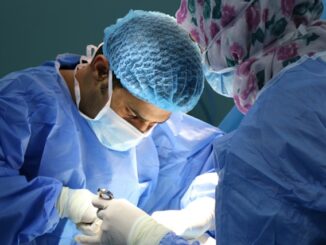Becoming a rhinoplasty surgeon in Canada is a challenging yet rewarding career path that requires a combination of extensive education, practical training, and certification. Here’s a step-by-step guide to help you navigate the journey to becoming a specialist in rhinoplasty surgery in Canada.
1. Complete a Bachelor’s Degree
The first step is to obtain a bachelor’s degree from a recognized university if you want to become a very well-known rhinoplasty surgeon like on this website. While there is no specific major required, most students choose fields such as biology, chemistry, or a pre-medical program. This undergraduate education provides the necessary foundation for medical school.
Recommended Courses:
- Biology
- Chemistry
- Physics
- Mathematics
- Anatomy and Physiology
2. Write the Medical College Admission Test (MCAT)
After completing your undergraduate degree, the next step is to take the MCAT. This standardized test assesses your knowledge in various areas and your aptitude for medical studies. A competitive score on the MCAT is essential for admission to medical schools in Canada.
Preparation Tips:
- Enroll in an MCAT preparation course
- Regularly take practice tests
- Focus on improving areas of weakness
3. Attend Medical School
Admission to medical school in Canada is highly competitive. Medical school typically lasts four years and is divided into two phases: pre-clinical and clinical. The first two years involve classroom-based learning, while the last two years focus on clinical rotations in different medical specialties.
Key Subjects:
- Anatomy
- Biochemistry
- Pharmacology
- Pathology
- Medical Ethics
4. Complete a Residency in Otolaryngology or Plastic Surgery
After earning your medical degree, you must complete a residency program. In Canada, aspiring rhinoplasty surgeons usually complete a residency in either otolaryngology (ENT – Ear, Nose, and Throat) or plastic surgery. Residency programs generally last five to seven years and include extensive surgical training.
Residency Training:
- General Surgery
- Head and Neck Surgery
- Facial Plastic and Reconstructive Surgery
5. Obtain a Fellowship in Facial Plastic Surgery
Many surgeons pursue a fellowship in facial plastic surgery after completing their residency. This specialized training provides focused experience in rhinoplasty and other facial procedures. Fellowships typically last one year and offer hands-on training under the supervision of experienced surgeons.
Fellowship Focus Areas:
- Advanced Rhinoplasty Techniques
- Facial Reconstructive Surgery
- Aesthetic Surgery of the Face and Neck
6. Get Certified by the Royal College of Physicians and Surgeons of Canada (RCPSC)
After completing your residency and fellowship, you must obtain certification from the RCPSC. This involves passing a series of examinations that test your knowledge and skills in your chosen specialty. Board certification is crucial for practicing as a recognized specialist in Canada.
Certification Process:
- Written Examination
- Oral Examination
- Continuous Professional Development
7. Obtain Provincial Licensing
In addition to RCPSC certification, you must obtain a license to practice medicine in the province where you intend to work. Each province has its own licensing body and specific requirements, which may include additional examinations or assessments.
Licensing Steps:
- Apply to the provincial medical regulatory authority
- Provide proof of education and training
- Pass any required exams
8. Gain Experience and Build Your Practice
After obtaining certification and licensing, gaining practical experience is essential. Many new surgeons start by working in hospitals or established clinics. Building a reputation for excellence in patient care and surgical outcomes will help you establish a successful practice.
Tips for Building Your Practice:
- Network with other healthcare professionals
- Join professional organizations (e.g., Canadian Society of Plastic Surgeons)
- Participate in continuing education and training
9. Stay Updated with Advances in Rhinoplasty
The field of rhinoplasty is continually evolving with new techniques and technologies. Staying current with these advancements is vital for providing the best possible care to your patients. Attend conferences, subscribe to medical journals, and engage in professional development activities.
Continuing Education:
- Attend Industry Conferences
- Subscribe to Medical Journals
- Participate in Workshops and Training Courses
Conclusion
Becoming a rhinoplasty surgeon in Canada requires dedication, perseverance, and a commitment to lifelong learning. By following these steps and continually advancing your knowledge and skills, you can achieve a rewarding career in this specialized field of medicine.









